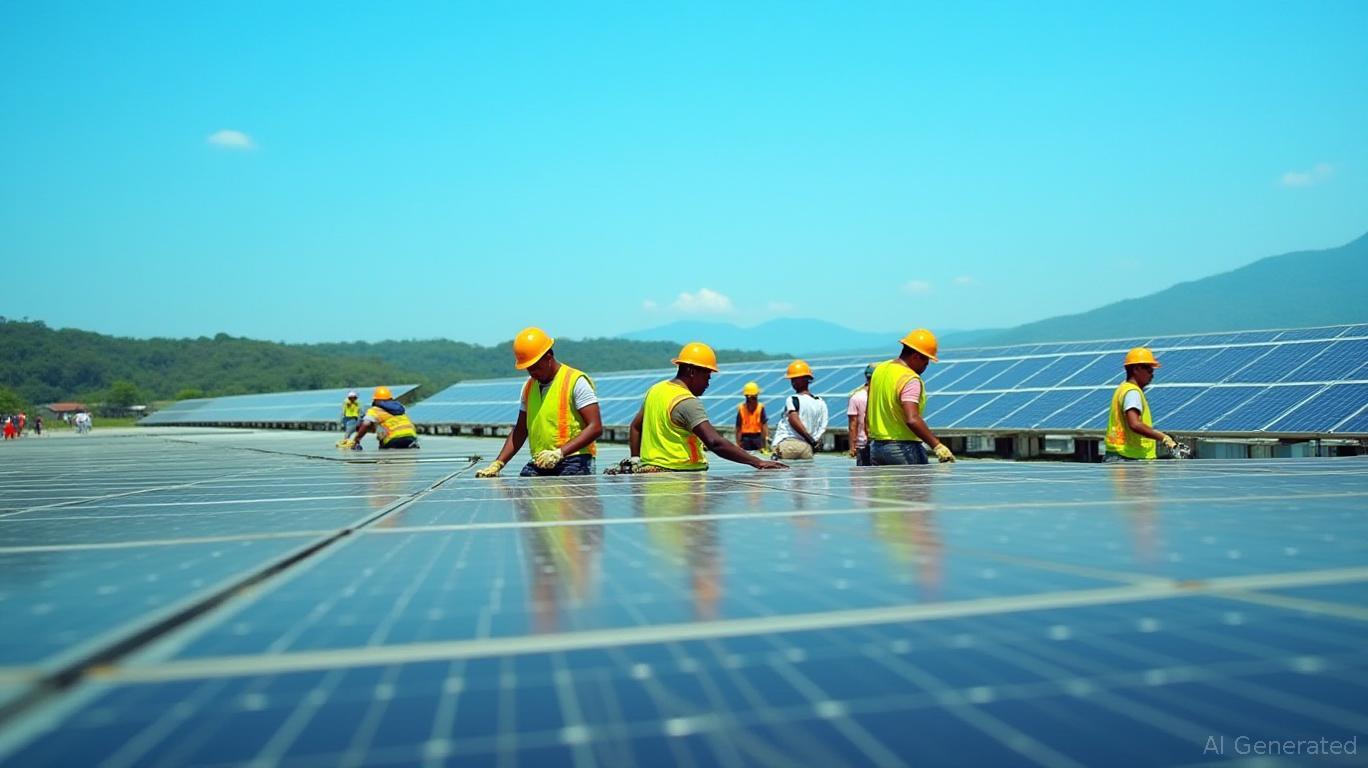G7 Summit Sparks New Dawn for Emerging Markets: Navigating Monetary Policy Shifts and Digital Frontiers
The 2025 G7 Summit, held in Banff, Canada, marked a turning point in global economic coordination, with implications stretching far beyond the traditional G7 members. Discussions around inflation targeting, monetary policy alignment, and digital currency frameworks have created a tailwind for emerging markets (EM), offering investors opportunities in sectors ranging from critical minerals to fintech. Here's how central bank coordination, inflation dynamics, and digital innovation are reshaping the EM investment landscape—and why now is the time to position portfolios accordingly.
Monetary Policy Coordination: A Buffer Against Volatility
The G7's reaffirmed commitment to price stability signals a shift toward tighter coordination among central banks. While developed markets like the U.S. and Eurozone face persistent core inflation (notably in services), EM economies are projected to see inflation decline from 8.34% in 2023 to 4.2% by 2029 (). This moderation, driven by coordinated fiscal consolidation and lower commodity price pressures, reduces the risk of abrupt rate hikes that historically spooked EM markets.
Crucially, the G7's focus on avoiding competitive devaluations () provides stability for EM currencies. Countries with strong policy buffers—such as Brazil, India, and Indonesia—can now attract capital without the fear of destabilizing capital flight.
Digital Currency Frameworks: A New Frontier for EM Growth
The summit's emphasis on cross-border payment modernization and virtual asset regulation opens doors for EM tech sectors. The G7's endorsement of the G20 Roadmap to improve cross-border payments () aligns with EM demand for cheaper, faster transactions—a boon for fintech companies like Brazil's Nubank (NU) and Kenya's M-Pesa.
Moreover, the G7's push to combat financial crime through AI-driven oversight () positions EM nations with robust digital infrastructure (e.g., Colombia's tech hubs) to lead in regulated crypto and blockchain services.
Sectors to Watch: Tech, Critical Minerals, and Green Infrastructure
Critical Minerals & EV Supply Chains:
The G7's focus on mineral security to counter China's dominance () makes EM mining giants like Vale (VALE) (Brazil's iron/nickel) and Southern Copper (SCCO) (Peru) prime picks.Renewable Energy & Green Tech:
With Brazil hosting COP30 and India targeting 500 GW of renewables by 2030, utilities like Eletrobras (ELET3) and solar firms in Mexico and Chile are poised for growth.Fintech & Digital Payments:
EM fintechs with regulatory clarity—e.g., StoneCo (STNE) (Brazil) or Paytm (PAY) (India)—are well-positioned to capture the $500B+ EM digital payment market.
Risks to Navigate: Currency Volatility and Policy Misalignment
While opportunities abound, risks remain. EM currencies remain vulnerable to U.S. dollar fluctuations (). Countries like Argentina and Turkey, with weak fiscal frameworks, could underperform. Investors should favor EM with:
- Strong FX reserves (e.g., India, South Korea).
- Inflation-linked bonds (e.g., Brazil's LTN/NTN series).
- Diversified ETFs like the iShares MSCI Emerging Markets ETF (EEM) or sector-specific plays like the Global X Lithium & Battery Tech ETF (LIT).
Investment Strategy: Tactical Allocations with a Long-Term Lens
1. Equity Exposure:
Overweight EM equities via EEM or EWZ (Brazil), with sector tilts toward tech/mining.
2. Fixed Income:
Target local-currency bonds in Colombia (BBG: COLCET) or Poland (PLN-denominated debt) for yield and diversification.
3. Hedge Against Volatility:
Use inverse ETFs like the ProShares UltraShort MSCI Emerging Markets (EWV) during geopolitical flare-ups.
4. Long-Term Plays:
Invest in green infrastructure funds (e.g., Invesco S&P 500 ESG Green Energy ETF (ESGG)**) and EM-focused ESG ETFs.
Conclusion: The G7 Effect is Here to Stay
The 2025 G7 Summit has cemented EM's role as the engine of global growth. By aligning on inflation, digitizing payments, and securing supply chains, G7 policies are creating a framework for sustained EM outperformance. Investors who allocate tactically to tech, minerals, and green sectors while hedging currency risks will position themselves to capitalize on this structural shift. As Mark Carney's AI agenda and the G7's declining dominance over global GDP () signal a new era, EM assets are no longer just a gamble—they're a necessity for diversified portfolios.

JR Research advises investors to monitor central bank policy divergence and commodity price trends closely while maintaining a balanced exposure to EM equities and bonds. The time to act is now—before the tide turns fully in favor of emerging markets.

Comments
No comments yet